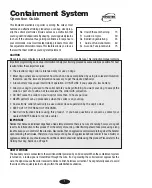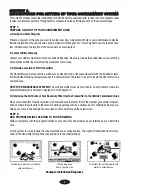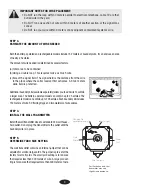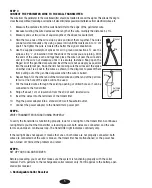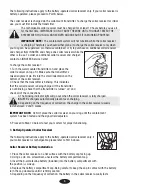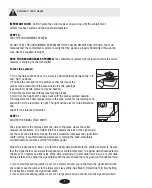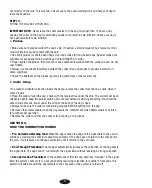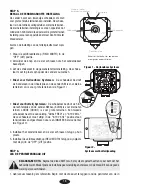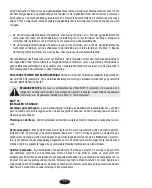
any farther, move the jumper to the small yard size setting. See Step 5, Determine Yard Size Setting
for instructions. Retest the signal field width.
The transmitter light indicates continuity only. If you have a loose splice or nicked wire, the red light
or
a flickering light may still show, but you may notice reduced or no field width. If this situation or a
wire break should occur, follow the instructions in the Troubleshooting Section located near
the end of this guide.
NOTE FOR BATTERY-OPERATED SYSTEMS:
Make sure the second jumper inside the wall trans-
mitter is set for 8.192 KHZ. This is the factory setting and should not be changed unless directed by
an INNOTEK Service Center.
IMPORTANT NOTE:
If the Field Width knob is removed or the position of the knob is altered by turn-
ing it clockwise or counterclockwise, you must always check the signal field for the desired setting.
Refer to Step 10, Test the Containment System.
STEP 12.
INSTALL THE BOUNDARY WIRE
Tools Needed
- Straight-edged spade, wire cutter / stripper, and standard screwdriver. If you plan
to run the wire across concrete, you will also need a caulk gun, silicone caulking, and a circular saw
with a masonry blade.
Placing the Wire
- For the system to work properly, the wire must make one continuous loop.
Burying the Wire
- The wire does not have to be buried, but for protection you probably want to
bury it at least one inch underground. Start by digging about 7 to 10 cm deep where the wire first
enters the ground near the transmitter and continue around the path of the loop wire. Note: When
covering a large area, you may wish to use a trenching machine to cut into the ground. However, we
recommend that the wire be placed in the trench by hand. A commercial wire-placing machine may
break the wire.
Driveways / Sidewalks
- When crossing an asphalt driveway, make a 2 cm deep cut across the
driveway using a circular saw and masonry blade. Place the wire in the crack and seal with asphalt
sealant. On driveways and sidewalks, if an expansion joint is available, simply place the wire in the
joint and seal with an outdoor caulk. When crossing gravel, bury the wire at least 7 cm deep. Use an
old garden hose or plastic PVC piping to protect the wire. In water, anchor the wire with large rocks.
Protect the wire with an old garden hose or plastic PVC piping.
STEP 13.
INSTALL THE BOUNDARY TRAINING FLAGS
After installing the wire, retest the containment system as described in Step 10, Test the
Containment System. Verify that the signal field width is consistent by following the instructions in
Step 11, Adjust the Signal Field Width. As you are retesting and verifying the system,
install the boundary training flags. Place the flags where the warning tone is first heard
as you approach the wire. The flags should be placed at the edge of the signal field width,
8

